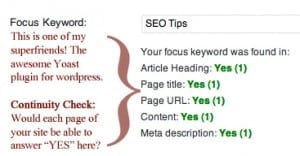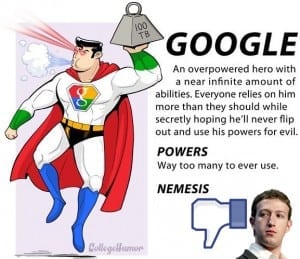 Building a “search-engine-friendly” site is really the same as building a user-friendly site that has benefits with Google. Simply said: you need interesting, relevant content that is easy to read in a natural way (as opposed to being stuffed full of keywords).
Building a “search-engine-friendly” site is really the same as building a user-friendly site that has benefits with Google. Simply said: you need interesting, relevant content that is easy to read in a natural way (as opposed to being stuffed full of keywords).
Granted, creating a “search-engine-friendly” website, in and of itself doesn’t mean you’ll get high page rankings, but there are a few best practices and SEO tips. It’s really what everyone should be doing—and what most of your competitors are already doing.
To that end, I’ve prepared a list of Do’s and Don’ts, which are…
DO:
- Aim for more than 250 words on each page…but don’t go overboard.
- Give pages unique titles that are relevant to each page’s content.

- Make headings for each page within <h1> (header) tags.
- Pay attention to meta tags.
- Give images descriptive alt tags.
-
Pay attention to continuity in your meta description, focus keywords, title and page url.
- Do your best to stay within WC3 web standards (and check your HTML by going to: http://validator.w3.org).
- List your business with free local directories, like Google Local, Bing Local, and Yahoo Local.
- Build strong content so that colleagues and customers want to link in to your site.
- Where practical, include the majority of brand names and keywords as text (as opposed to embedding them as images).
- Create a reason for people to convert (e.g. fill out a contact form, subscribe to a newsletter, buy a product, etc.).
- Exploit good content and good copy.
- Use keyword-rich text in a natural, readable format.
How do you know if you’re using the right keywords? Well, ultimately, you need to answer the question of what your content is about. Sometimes, what you’re actually saying may be different than your overall topic. In other words, there may be keywords associated with your content that don’t actually appear on your page.
One little trick is to go to Google AdWords’ “find keywords” function and use your keywords as search terms to see what else comes up.
You can also see what kind of demand there is for your particular keywords (versus related terms) and figure out who your competition is for those keywords. You can actually find these things out rather easily by going to SEMRush.com.
Now for the don’ts.
DON’T:
- Use Flash.
- Include graphics or images without alt tags.
- Use the same title tag (or a bad title tag) on all pages of the site.
- Use text sparingly. (Less is not necessarily more.)
- Use text that you can’t highlight or cut-and-paste. (Be aware of what appears to be text but is actually an image.)
- Repeat your keywords in a way that is not narrative or natural.
- Use keywords multiple times without purpose.
- Trade link for link or go for special offers for inbound links. (Circular linking has very little value compared to the benefit you get from it.)
Regardless of what Google’s official line is, there will always be people who continue to see if they can get away with more. Someone using these kinds of “black hat” techniques might try to manipulate content by:
- employing “keyword stuffing.” (Some companies put long lists of keywords on their site—and not much else.)
- loading the source code with keywords. (Search engines search source code. So, some companies put search terms in their comments tags, so that they will be crawled.)
- using invisible text. (Some web designers format keywords in a text color that matches the background color so that they aren’t visible to visitors, but are readable by spiders.)
- “content scraping.” (Some sites pull/steal content from other sites in order to appear to have original, relevant content.)

All of the above tips make for a “search-engine-friendly” site that’s ripe for the picking. For some websites, being friendly (with the right set of keyword phrases) is enough. If you’ve already attended to the "DOs" above, however, and still don’t feel you’re getting enough Google love, it may be time to “up your game.”
Many SEO companies either help you with boosting the friendliness of your site, as stated above, or go dangerously close to the unsavory “black hat” territory. There are only a handful of companies that do “High End SEO,” which involves proprietary techniques that let your site be seen by Google, but stays far away from anything that smells like “black hat.”
We’ll be demystifying more parts of the SEO world in an upcoming post. For now, though, you may feel like you have quite enough homework to do—or at least enough to discuss with your marketing and web team.
I’m curious: Which of the "DOs" or "DON’Ts" above came as a surprise to you? Let me know by commenting below.



